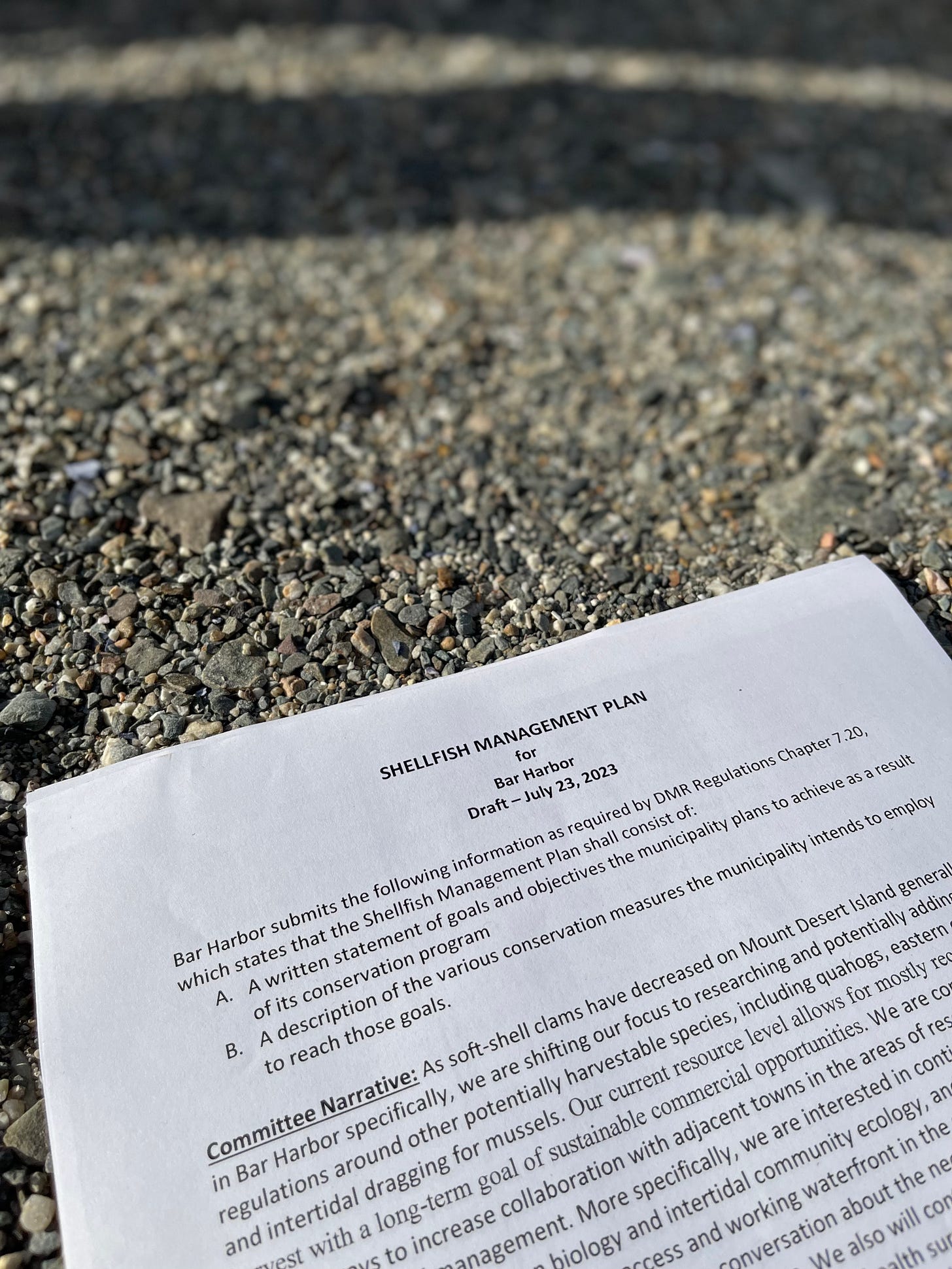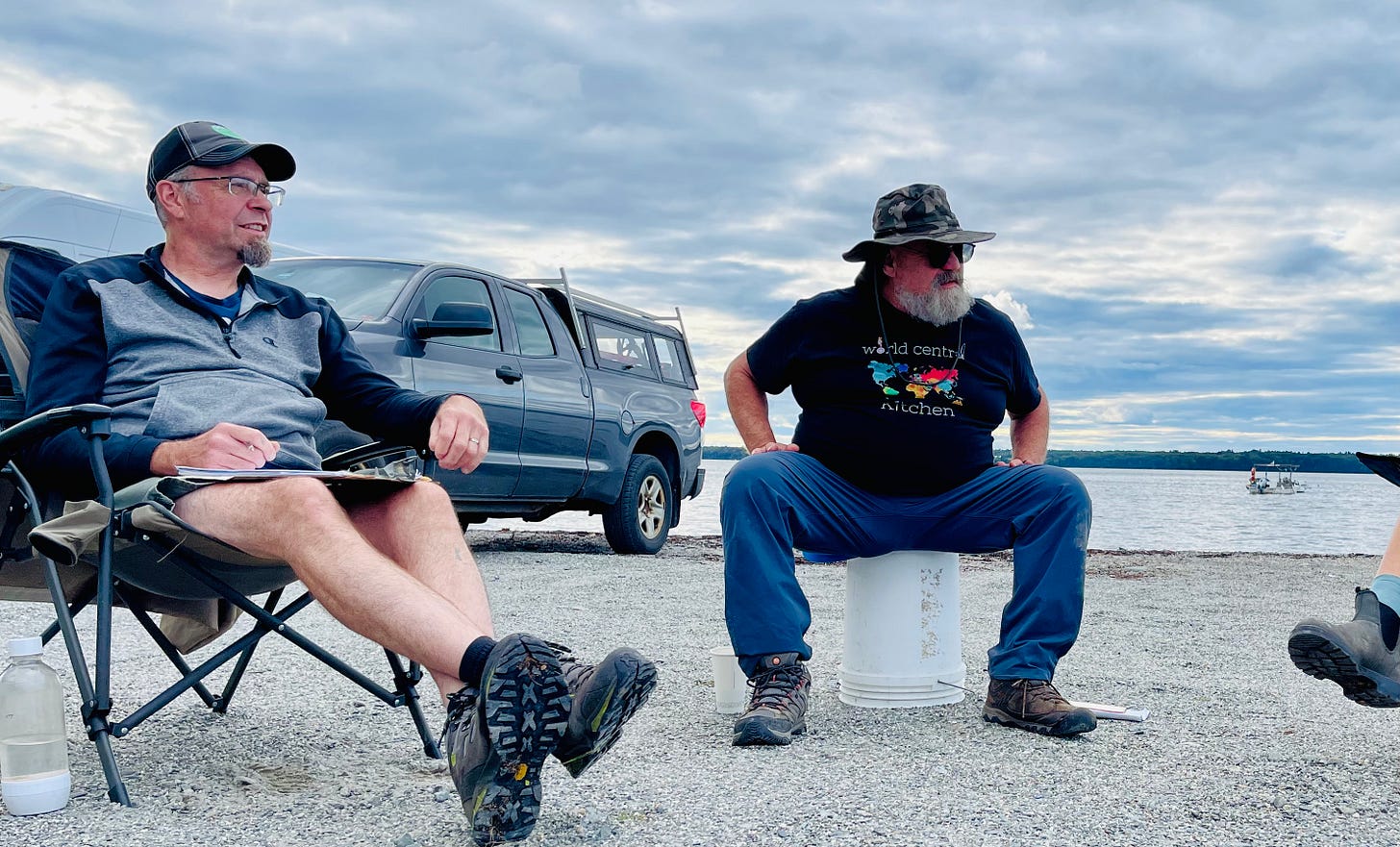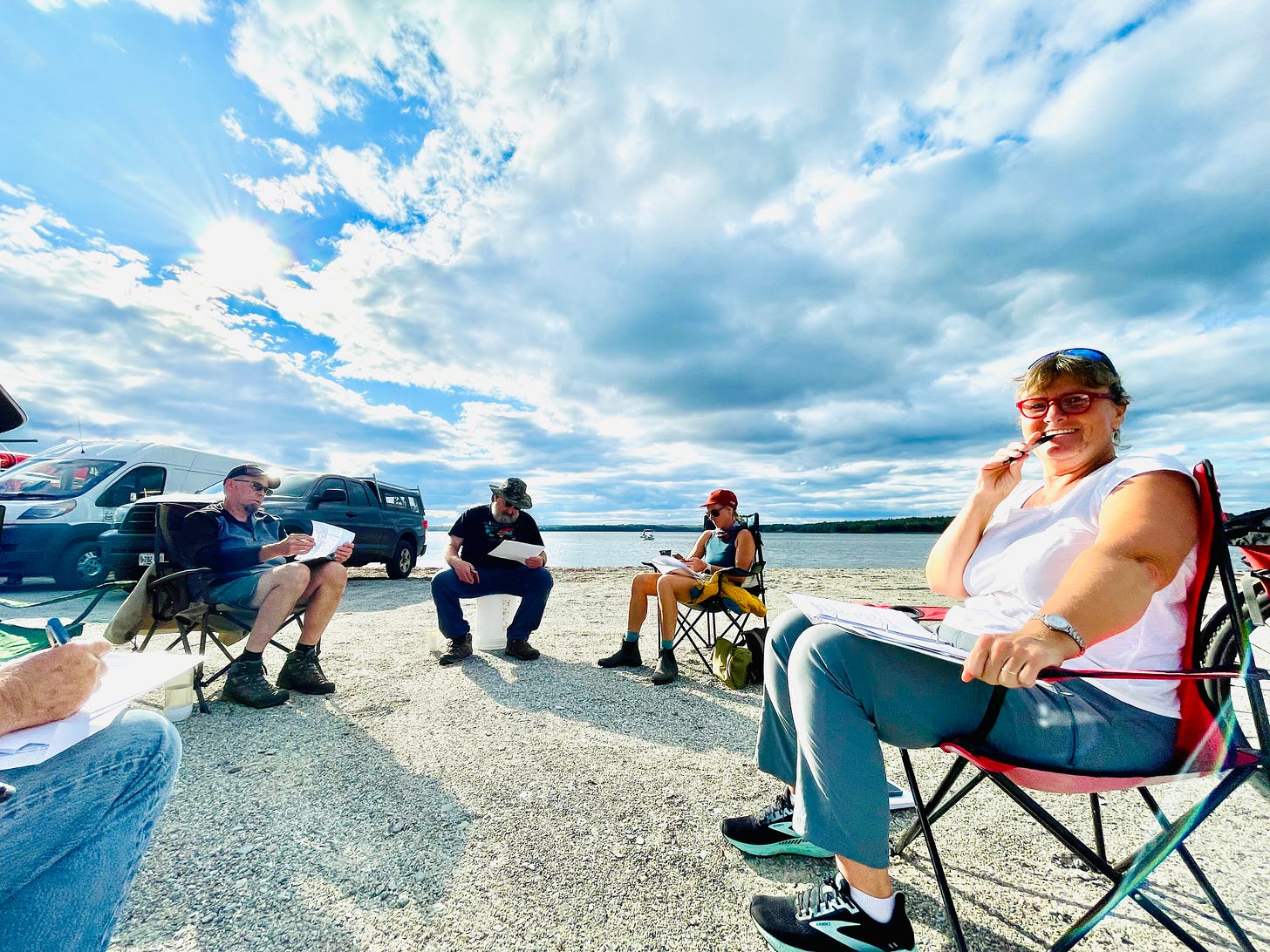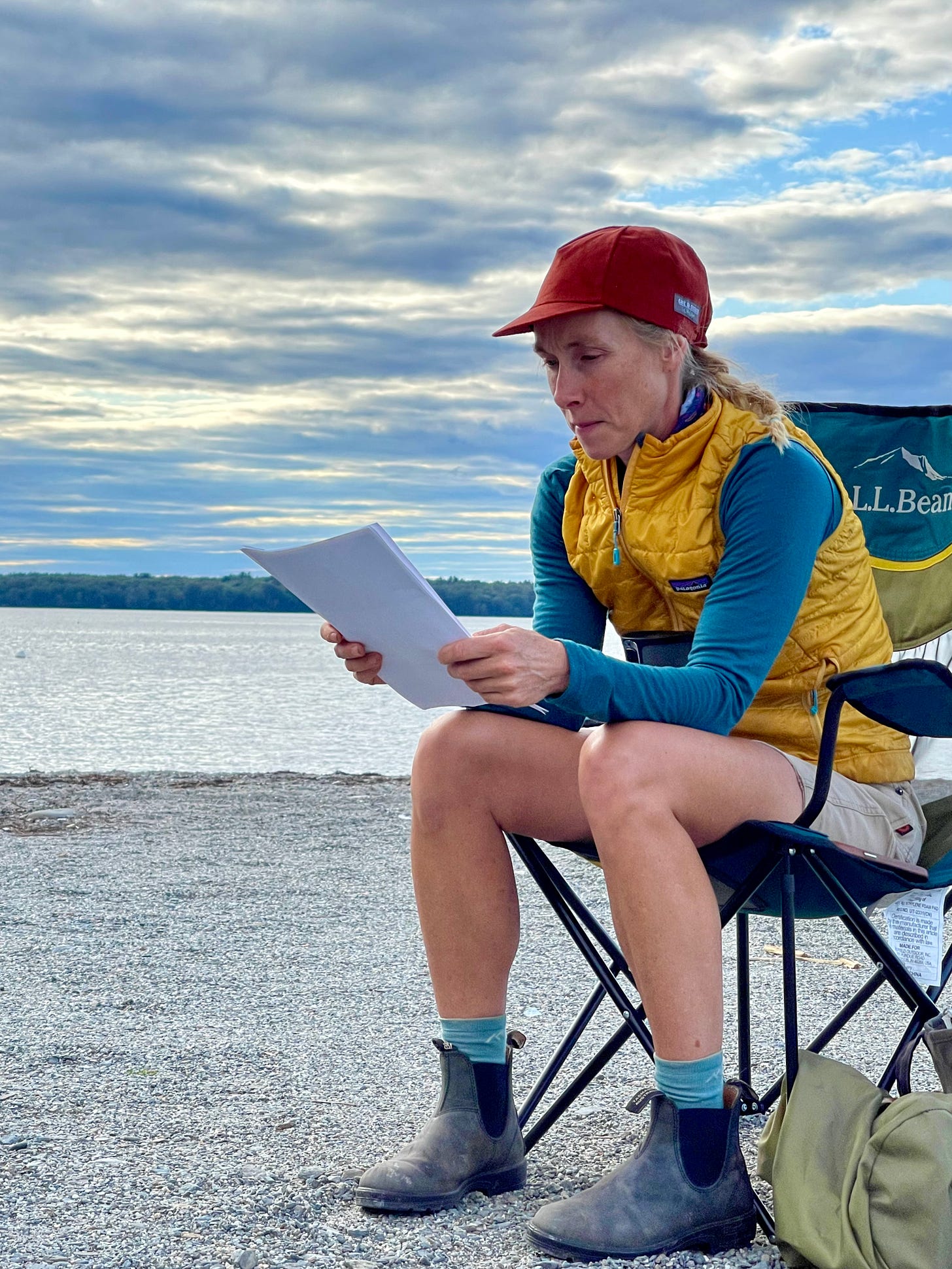Stars of the State
Bar Harbor Committee Members' Shellfish Conservation Efforts Make Good Ripples in Coastal Waters
BAR HARBOR—Sometimes hard work and research makes you the star of the state and that’s exactly what has happened with Bar Harbor’s Marine Resources Committee.
The committee met at Hadley Point Beach last week and quickly discussed the town’s Shellfish Management Plan, which is required by the state.
The plan has to have a written statement of Bar Harbor’s goals and objectives for shellfish conservation and a description of the measures the town will employ to reach those goals.
The goals, according to the July 23 draft plan are to:
Maintain sustainable populations of harvestable shellfish within the intertidal zone;
Provide local harvesters opportunities by maintaining mudflat access, improving water quality, and “changing potential sources of pollution to open currently closed areas” and to “work with partners to maintain water quality in open areas;”
Restricting harvest when there is evidence of overharvesting.
The harvestable shellfish outlined in the first bullet point are soft-shell clams, quahogs, and American oysters.
The committee also outlines specific measures to achieve those goals. Those measures include:
Unlimited recreational and commercial licenses for residents;
Population assessments of quahogs and American oysters, which are currently unregulated;
Potentially tweaking regulations if there are overharvested species in the ordinance via town-wide limits or conservations closures, which would be done with consultation with state biologists;
Finishing a five-year clam recruitment study “to determine the role of predation versus other factors (E.g., overharvesting, global climate change) on local clam population;”
Collaborate with other towns on MDI and Frenchman Bay;
Increase communication between the town’s Public Works Department and committee about combined sewer overflows and “to consider continued water-quality monitoring of cruise ships;”
“Advocate for the continued preservation and expansion of working waterfront and shore access within the town governance structure, due to both gentrification and shoreline erosion due to seal level rise, including both for a range of recreational and commercial use, both generally and specifically as input into the town comprehensive plan;”
Improve information access for harvesters at harvesting areas and on the town website, especially about potential shellfish contamination because of pollution, harmful algal blooms, or large rain events.
“This particular draft made our town the star of the state,” member Fiona de Koning said with a laugh.
Petersen said he hopes to help other towns draft their own state-mandated plans by using Bar Harbor’s plan as a template.
COMPREHENSIVE PLAN MEETING WITH TOWN
There was also a quick update about the committee’s workshop with the town’s Planning Department, Comprehensive Planning Committee, and Marine Resources Committee
“We gave her a lot of good info,” Chair Chris Petersen said of the meeting and Planning Director Michele Gagnon. “I think we did a really nice job as a group. I actually appreciated the Harbor Committee being there as well.”
“I think it was good. Really good,” de Konig agreed.
The committee members also praised Planning Director Michele Gagnon and how she ran the meeting.
Minutes from the August meeting indicate that the group was concerned about including the Bay Ferries, town-owned site off Route 3 as part of the working waterfront infrastructure; the impact of the land use ordinance on shorefronts, and the working waterfront points it’s been talking about at multiple meetings.
FIELD WORK PLANS FOR SEPTEMBER AND MEETINGS
Petersen also quickly spoke about the plans to bring College of the Atlantic students out into the field to continue work on the clam recruitment studies and census. There will be anywhere between 12-23 students helping out and he encouraged committee members to come as well.
At the end of October or early November, Petersen and the students will be pulling out all the recruitment boxes.
The committee also discussed upcoming stakeholders meetings and regional shellfish committees. They also tweaked a draft of blue mussel harvesting information, which includes harvest information and advice. This will be posted at Hadley Beach as well as on the town website.
“There are meetings galore happening,” Petersen said.
VIBRIO
Maine is part of a National Program ( The National Shellfish Sanitation Program NSSP) that ensures that bivalve shellfish are safe for consumers. All states have to comply with the model ordinance. To reduce the risk of any Vibrio infection, the Maine Department of Marine Resources has specific regulations pertaining to oysters and hard clams. The committee members also discussed Vibrios and the potential changes to harvesting licensing in the state.
Vibrios are bacteria that naturally occur in marine water. Some species can cause illness in people. Those illnesses include septicemia and gastroenteritis. This happens when undercooked or raw bivalve shellfish or other undercooked or raw seafood is consumed or an open wound is infected by water. There are over 70 different kinds of this bacteria, most do not cause illness and are harmless. About a dozen can make people ill, but Vibrio Vulnificus can cause death and is usually contracted not through shellfish consumption, but open wounds.
There are many strains of Vibrio in our waters naturally but there have been no reported deaths in Maine from Vibrio Vulnificus.
Officials worry that as waters warm, so will the bacteria which thrive in warmer salt or brackish water. Those deadly infections are rare throughout the country. This summer two people on the northern East Coast (New York and Connecticut) have died. There are more cases in North Carolina and Florida where the water is warmer. Similarly, most infections occur between May and October. That’s because the water is warmer then.
According to committee member Joanna Fogg, it’s common sense. Keeping shellfish and fish cold, reduces the bacteria’s ability to increase. The bacteria can’t live if the water is too cold.
Those regulations (NSSP- National Shellfish Sanitation Program) are meant to keep the shellfish safe. The bacteria rapidly reproduce if they are not cooled to 50 degrees Fahrenheit.
There is currently a Vibrio certification for harvesters and primary dealers, but the state is likely going to implement statewide plans. The state will not be issuing recreational licenses. There may be an option for the local municipality to issues licenses but that will require additional regulation. It’s unsure when these changes will come online, but the committee would like to have a plan in place by next summer.
After some illnesses occurred in Southern Maine from oysters in the Casco Bay area, according to committee members, the state took the required steps to locate and trace the problem. “It’s sort of brought it to a head that the warming waters are making this a problem.”
The committee is going to look at how it can help wild harvesters and aquaculturists adopt to the state plans and cool the shellfish down as fast and as soon as possible. Restaurants may also have to have an enhanced retail license.
“It’s really, keep it cold. Keep it really cold soon ,” de Koning said.
According to the East Coast Growers Association, “Less than one percent of food-borne illness is related to Vibrio, while the vast majority are associated with vegetable, chicken, and meat products.
Before clamming in any area in Bar Harbor you should check to make sure the area is open. Potential shellfish closures are as listed:
Call the Department of Marine Resources Maine Red Tide and Shellfish Sanitation Hotline 1-800-232-4733 or 207-633-9571 with any other questions.
Want to help out?
Maine Healthy Beaches is a volunteer monitoring program that measures for potential fecal contamination in water and serves as an advisory for swimming. Data on beaches in the Bar Harbor region are available online.
LINKS TO LEARN MORE
https://www.barharbormaine.gov/125/Marine-Resources-Committee
https://www.maine.gov/dmr/fisheries/shellfish/maine-dmr-vibrio-education
East Coast Growers Association











